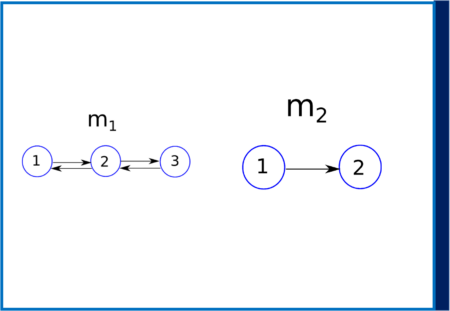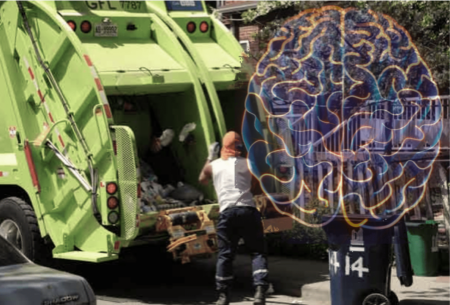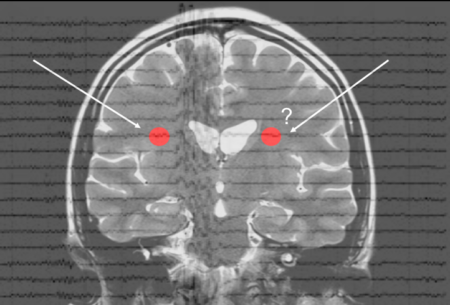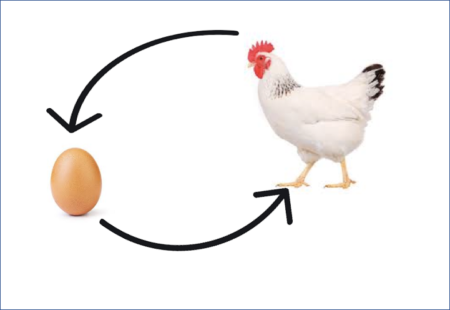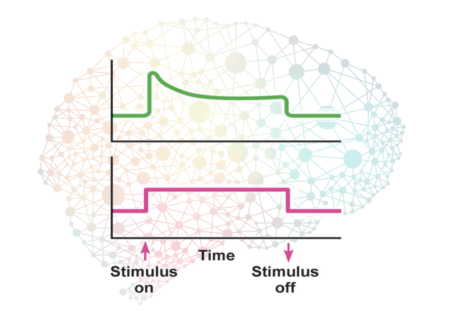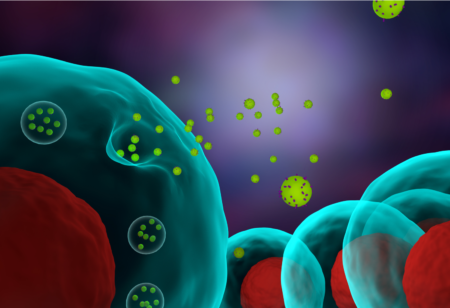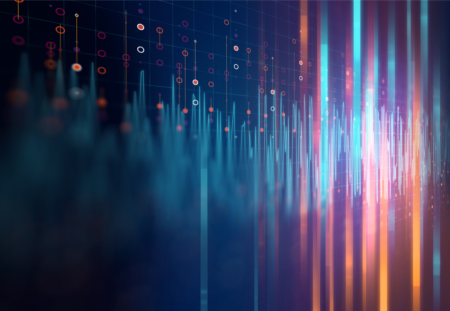Tracking and understanding the mental state of populations around the world is important for understanding how we are faring as a collective humanity and determining […]
Mentalog results
Representativeness of the Global Mind Project Data
Self-report survey has been one of the main tools in the study of human populations in matters of mind across numerous disciplines from Sociology to […]
Understanding the Construction of the MHQ Score
Here we explain how and why the MHQ scale is constructed including addressing common questions such as why the MHQ uses a negative-positive scale as […]
EEG Approaches to Measuring Depth of Anesthesia
What are the common approaches to measuring depth of anesthesia in clinical application and how do we evaluate the algorithms used? Monitoring the depth of […]
Bayesian Model Selection For DCM Using EEG
How do you compare and select the best Bayesian model in Dynamic Causal Modeling or DCM of EEG data? In the previous two blogs we […]
Dynamic Causal Modelling (DCM): DCM – Neural Mass Models and Bayesian Inference
This post discusses the core components of neural mass models and Bayesian inference in DCM applied to EEG.
Dynamic Causal Modeling and the Application of Bayes Theorem
Dynamic Causal Modeling (DCM) takes a probabilistic Bayesian framework to infer effective or causal connectivity, essentially to model how a stimulus would influence the connectivity […]
A Primer on Bayes Theorem (for Neuroimaging)
A Bayesian framework, one that works with conditional probabilities, has numerous applications in Neuroimaging in general and in EEG specifically. But first, a primer on Bayes theorem and how it works.
What Can Your Blood Tell You About Your Brain?
The blood may hold many clues to damage and degeneration in the brain. New findings bring a blood test for brain disorders closer to reality. […]
EEG Signal Quality in Wet Versus Dry Electrodes
Dry electrodes have some clear advantages but how does their signal quality compare to wet electrodes? Choosing one over the other may be a tradeoff between time, signal quality and stability.
Wet and Dry Electrodes for EEG
EEG recording technology remains similar in principle since its first use in 1923. However, a vast array of electrode types, both wet and dry, are […]
Astrocytes Mediate Brain Lymphatic Function
The lymphatic system plays a key role in waste removal and immune function. Until 2012 it was thought that not such waste removal system existed […]
Optical Stimulation in Bidirectional BCI
Optogenetics have been used for bi-directional BCI in mice but is unsuitable for freely moving subjects due to its tethered optical fibers or fixed imaging […]
Bidirectional Interface for BCI
Performing a motor task requires a feedback loop that informs the brain of success of each motor action. For sensory impaired this means brain computer […]
Progress in BCI in SSVEP-based Spellers
SSVEP-based spellers, a common BCI application, have improved in information transfer rates over the years. In the previous post we discussed the fundamentals of SSVEP-based […]
BCI Using Steady State Visual Evoked Potentials
Steady State Visual Evoked Potentials uses different frequencies of visual stimulii to distinguish between objects in BCI applications and have relatively high information transfer rates. […]
Can you measure EEG in the Cerebellum?
The cerebellum has four times as many cells as the neocortex and possible roles in everything from movement to cognition and emotion but is much […]
A Primer on Brain Machine Interface
What is involved in a Brain Machine Interface (BMI; also called Brain Computer Interface or BCI) set-up? Here is a primer on paradigms for BMI […]
fNIRS: Advances and Challenges
This is a primer on fNIRS, what it does, the technical advances, challenges and potential applications. With all the recent publicity around Kernel’s new fNIRS […]
The Slope of the Power Spectrum: An important metric in EEG
The slope that represents the decay of the EEG power spectrum carries important information about the signal that can eliminate many of the inconsistencies of […]
Reading a Thought
There is a great deal of hype about neuroimaging technologies being able to read our thoughts. And yet, we don’t really know what a thought […]
The LCMV Beamformer
LCMV Beamformers are a type of beamformer algorithm used source estimation from EEG data. In the previous blog post we saw how beamformers can be […]
The BIDS Data Structure for EEG
The Brain Imaging Data Structure (BIDS) project is an effort to create data standards for accessibility, usability and reproducibility of neuroimaging data. Initially developed for […]
Solving the EEG/MEG Inverse Problem with Beamformers
Beamformers, a technique adapted from radar applications, are a type of spatial filtering approach to solving the inverse problem in EEG and MEG. Here are […]
The Impact of Life Experience on the Human Brain
The brain develops and morphs across the lifespan based on experience. Two talks discuss the impact of our behaviors from physical exercise to cell phone […]
Finding EEG Microstate Classes with Clustering
EEG Microstates are generally identified using clustering algorithms and results can vary depending on choice of algorithm and parameters. In the last post I introduced […]
Monitor-and-Act Units as Elements of Intelligence
Where is knowledge stored within the brain and living systems? The concept of monitor-and-act units provides a framework for understanding this. In my last post […]
An Introduction to EEG Microstates
EEG microstates represent a dynamical view of how the spatial distribution of the electric potential on the scalp changes over time. Microstates typically last 80-100 […]
Three Tutorials in EEG Analysis
Here are three tutorials on common methods, challenges and pitfalls in the analysis of EEG for those who missed the symposium last year covering issues […]
Applying Transfer Entropy to the EEG
Transfer entropy is a way to estimate interdependencies between two time series that is sensitive to both linear and nonlinear interactions so a useful measure […]
EEG and Depth of Anesthesia
One of the key challenges of anesthesia is assessing the state of consciousness or depth of anesthesia of the person through the process of surgery. […]
Making Sense of Granger Causality in EEG
Granger causality is an estimation of causality in time series that depends on linear methods. Does it have relevance to the nonlinear, non-stationary EEG signal […]
The Perils of EEG Preprocessing
Often artifact removal means throwing out a lot of valuable signal. Is it worthwhile to throw the baby out with the bathwater? The EEG signal […]
The Adaptive Traverse: How Knowledge Moves from DNA to Behavior
Here I discuss the concept of an adaptive traverses and how this might explain the link between genes and behavior. Your DNA knows things. It […]
Raising Robots in AI-Kindergarten
How insights from the way the brain learns can be used to design adaptive learning mechanisms for AI that include both phylogenetic and ontogenetic aspects. […]
Challenges of Methodological Variability in EEG
Methodological variability is a challenge in the EEG field at various levels. This video provides a view of these challenges in four major areas along […]
What’s New in the EEGLAB Signal Processing Platform
EEGLAB is an open source platform running on Matlab with a large set of functions for analyzing the EEG signal that are constantly being updatd. […]
The Temple University Hospital EEG Corpus
The Temple University Hospital (TUH) Corpus with over 30,000 EEG records and associated clinical reports is one of the largest open EEG data repositories available. […]
Designing Experiments to Uncover Neuron Intelligence
Intelligence is an adaptive process that requires an environment on which it can act. To uncover if neurons have independent intelligence requires closed loop experiments […]
How Intelligent Are Neurons?
If individual neurons were as intelligent as little minions, how would we know? The experimental paradigms today assume they are not, what should we change […]
Connectivity Estimation with Wavelet Coherence
Wavelet transforms can be used to compute coherence in the EEG and estimate dynamic interactions. Here is a primer on how to do this. Analogous […]
5 New Year Resolutions for Your Lab
We all like new starts and the new year is a great time to revamp some things that maybe aren’t working well or could work […]
Applications of Wavelets in EEG
In the previous blogpost, we discussed how wavelets allow us to perform time-frequency characterization of non-stationary signals such as EEG. Here we discuss some applications […]
How Does the Brain Deal With Novelty?
Current theories of connectionism have a hard time explaining how the brain deals with novel situations. An alternative approach of fast hierarchical adaptations could solve […]
Time-Frequency Analysis and Wavelets
Wavelets overcome limitations of methods such as the fourier transform by enabling a view of changes across both time and frequency. Here is a primer […]
The Impact of Individual Differences in Neuroimaging Data
Inter and intra person variability in brain metrics across the population can result in misleading interpretation of results. It is important to understand the distributions […]
A First Test of Hierarchical Adaptations
Are there hierarchical adaptations in the nervous system that help rapidly adapt responses to changing circumstances? A hypothetical experiment with the patellar reflex can help […]
From Neurons to Concepts
How does the brain store concepts and activate them in a contextual manner? AI ignores concepts, connectionist models of the brain ignore concepts. What can […]
Astrocytes in Charge
Over the last decade or so it has been found that astrocytes exert control over synapse formation, synaptic transmission, blood flow and host of other […]
How are Concepts Created in the Brain?
A concept is a general notion or construct of something that doesn’t necessarily need all the pieces exactly and depends on context. How does the […]
A Primer on the Application of Graph Theory to EEG
Graph theory has been most commonly used to understand the structure of social networks and has gained traction in the last decade as an important […]
Can Neurons Learn to Adapt?
Can the fast adaptation of neurons explain how we are able to switch so quickly between different learned behaviors? If so, neurons must learn to […]
Explaining Flexible Information Routing in the Brain
We constantly change our behavior between things like driving a car to chopping an onion. How does the brain switch quickly between different sensory-motor pathways […]
The Fantastical Claims of Consumer Brain Wearables
Consumer brain recording technologies make all sorts of claims that are simply not substantiated in the literature at the level of individual predictions. Will FTC […]
Finding an Alternative to Connectionism
Mainstream theory of brain function revolves around patterns of connectivity. Could the adaptations of neurons be an alternative anchor that provides greater insight? Today’s mainstream […]
Human Brain Organoids: What They Are and Aren’t
Human brain organoids are human brain cells derived from stem cells and grown in 3-D. How much like a real brain are they? Much of […]
Predicting Human Behavior with Diffusion Models
Random walk or diffusion models have been successful at predicting human decision making and guiding experiments. Here’s why. In my last post I described two […]
Transport of Proteins, RNA and DNA among Brain Cells
The discoveries of exosomes and tunneling nanotubes that allow intercellular transport of proteins, RNA and DNA among neurons and glia change how we think about […]
Constructing a Theory of the Brain
What are the necessary elements for a genuine theory of the brain and what will it take to construct one? In my previous posts I […]
Engineering a Brain: Can This Work?
Many theoretical proposals in neuroscience are presented in the form of an engineering solution. But engineering a solution is a different process than creating a […]
EEG Connectivity Using Phase Lag Index
Phase Lag Index is a tool to estimate connectivity in EEG in a way that eliminates volume conduction effects. However, it is also likely to […]
Building The Brain With Modules
Models in computational neuroscience that solve for one outcome cannot combine with one that solves for another. Can a modular approach solve this? The short […]
The Crisis of Computational Neuroscience
Computational Models attempt to explain the behavior of the brain using neural network simulations, but assumptions that help simulate one phenomenon are destructive to the […]
Why Do Brains Have Spontaneous Activity?
The brain spontaneously produces activity regardless of mental activity and stimulus input. Current theories treat this activity as noise or simply ignore it. What does […]
Tracking Anesthesia
With multifaceted effects from analgesia, amnesia, paralysis and loss of consciousness the mechanisms of anesthesia are still a mystery. Can tracking with EEG provide deeper […]
The Radically Changing View of the Cerebellum
Long thought to be purely involved in motor activity, new roles have been discovered for the cerebellum in cognition. Yet so long on a backfoot […]
Finding your Grandmother Inside Your Head
How do you perceive your Grandmother? It is still not known how the activity of neurons represent complex perceptual objects with many features. The theories […]
Brain Waves, Sine Waves and the Fourier Transform
The most popular method of analyzing brain signals is to decompose it into its component sinusoids using the fourier transform. However a non-sinusoidal physiology poses […]
Understanding Multiscale Entropy
Multiscale entropy extends sample entropy to multiple time scales or signal resolutions to provide an additional perspective when the time scale of relevance is unknown. […]
Alpha, Alpha Everywhere: What Does it Mean?
Activity in the alpha band has been a subject of much interest since the first recording of EEG. However methodological inconsistencies and confounding changes across […]
Factors that Impact Power Spectral Density Estimation
The Brain’s Inner Sweet Tooth
Sugars such as glucose are an essential source of energy for the brain’s metabolic process but there is a flip side. The term “sugars”, is […]
Brainbase Beta
Brainbase is a platform to accelerate and amplify EEG research that will launch in a couple months. Here is a sneak peek. EEG research today […]
Deconstructing a Thought
The quest to find the physiological substrate of a thought has been elusive. What should we be looking for? Distributed memories American psychologist Karl Lashley […]
Building Global Collaborations for the Human Brain Diversity Project
With standardized metadata and EEG data formats, collaborations around the world can lead to large scale datasets and multidimensional insights into brain diversity. With over […]
The Blue Frog in the EEG
Alpha, beta, gamma what? Spectral decomposition of the EEG signal may lose critical information. In 1924 when Hans Berger first found a signal from the […]
1001 Apps that Use Your Brain Waves
From neurofeedback and brain training to video games, apps that make use of your brain waves are growing in numbers and possibilities. It’s December 2014 […]
Is the Emotiv EPOC signal quality good enough for research?
The Emotiv EPOC at less than $2000 opens up enormous possibilities to take research out of the lab to get access to subjects and scale […]
EEG and FMRI Publications by Country
~70% of FMRI papers and 75% of EEG papers come from Western Europe (including UK, Brexit notwithstanding) and the United States but China has shown […]
Taking Neurotechnology out of the Lab
With shrinking electronics and wireless technology, EEG devices are getting portable, and cheaper Commercial EEG or electroencephalogram machines, devices capable of measuring electrical signals in […]





